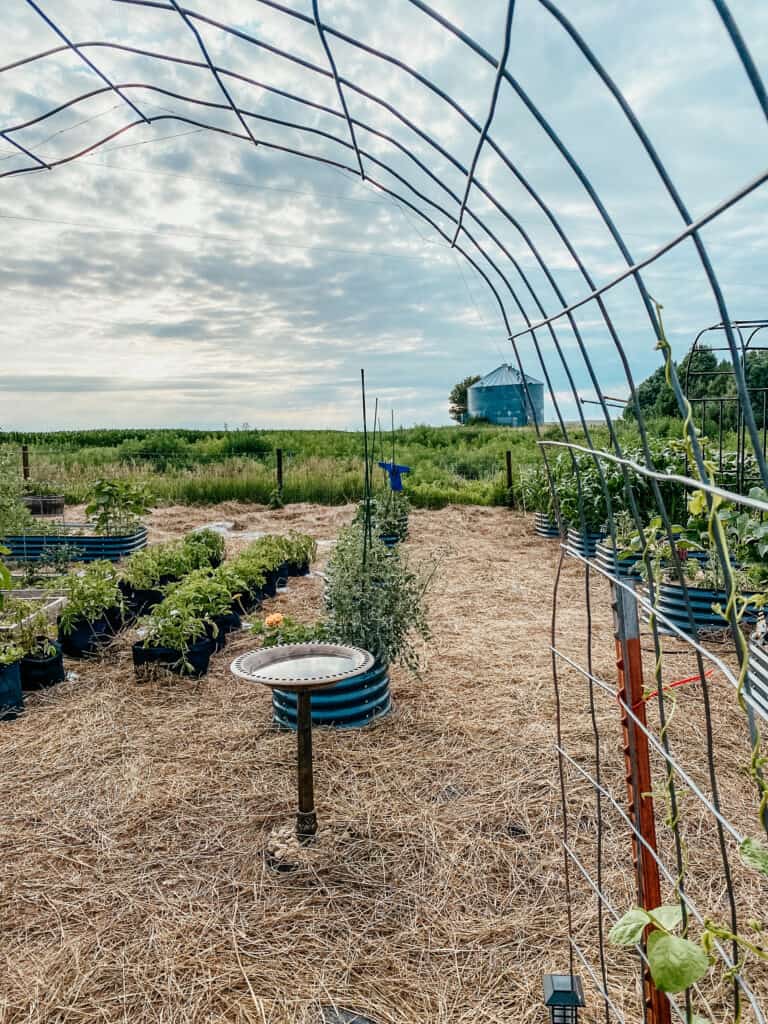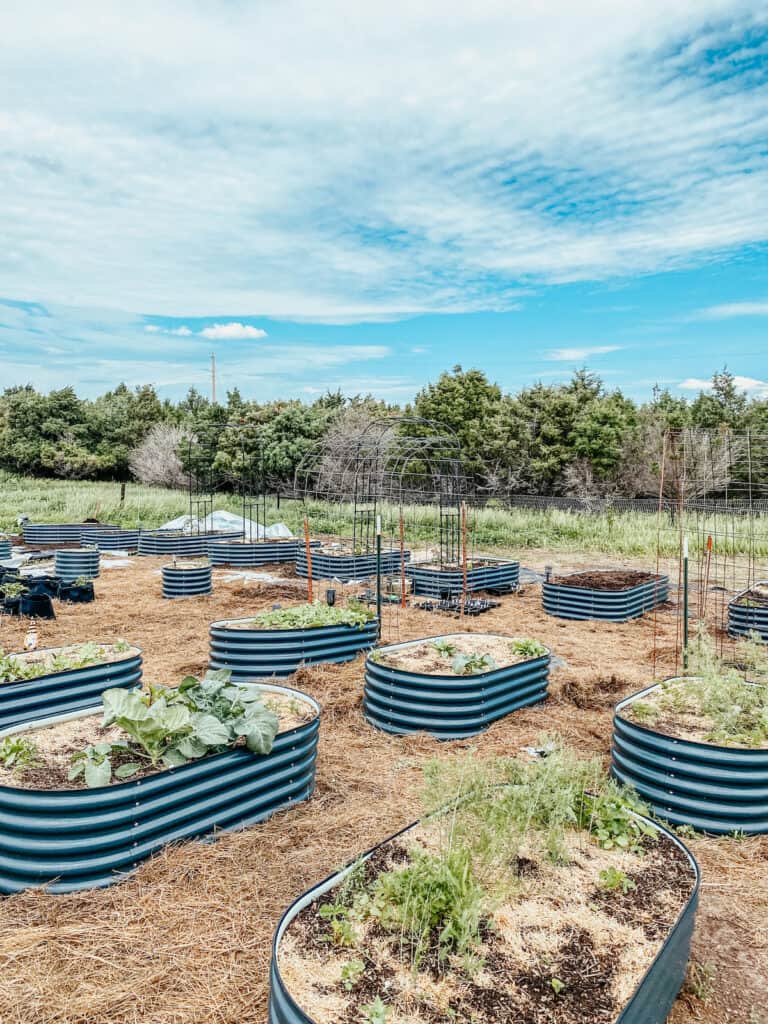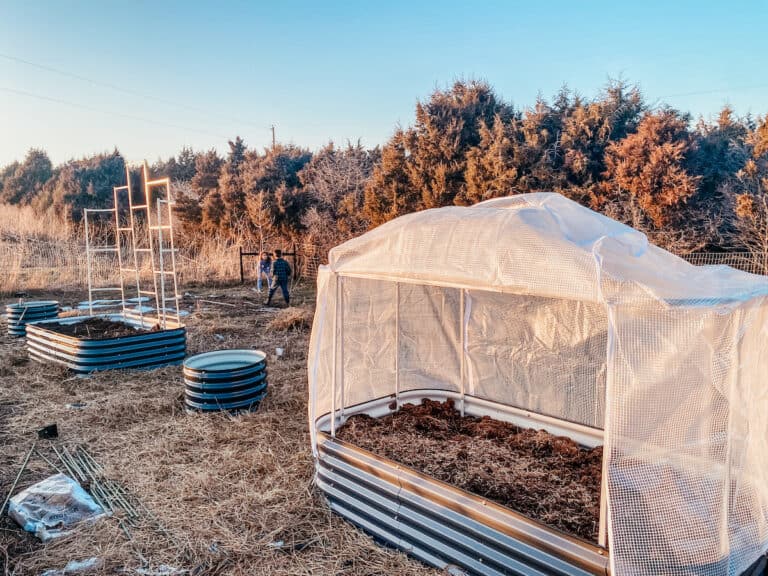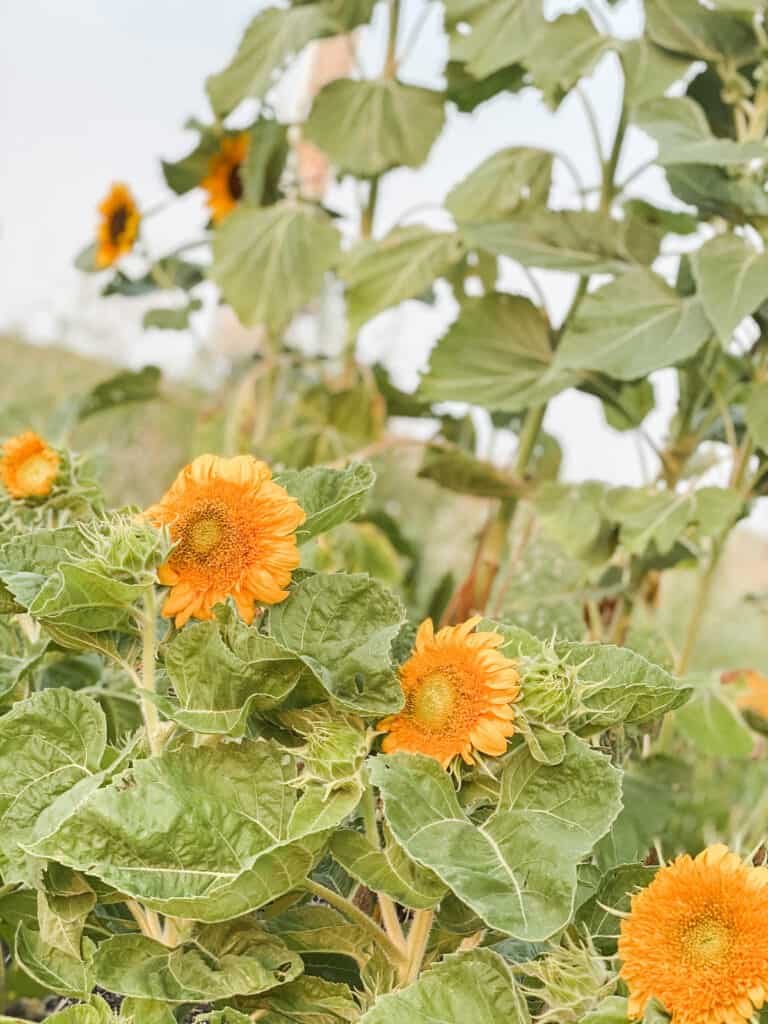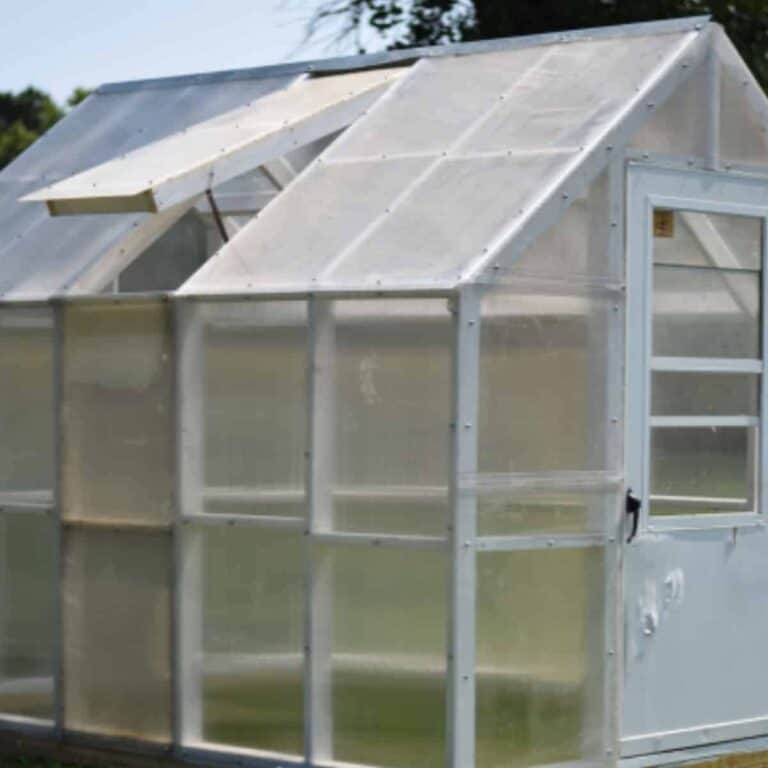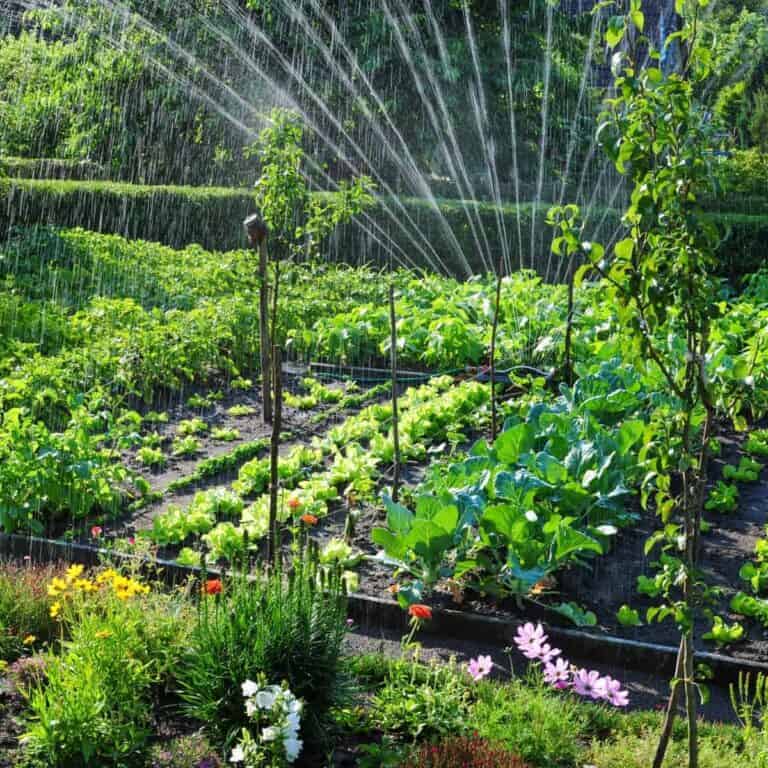How-to Fill a Raised Garden Bed
Gardening in raised beds is a great way to maximize a small space, but filling it can become a bit expensive. In this post, learn how to fill a raised garden bed on a budget.
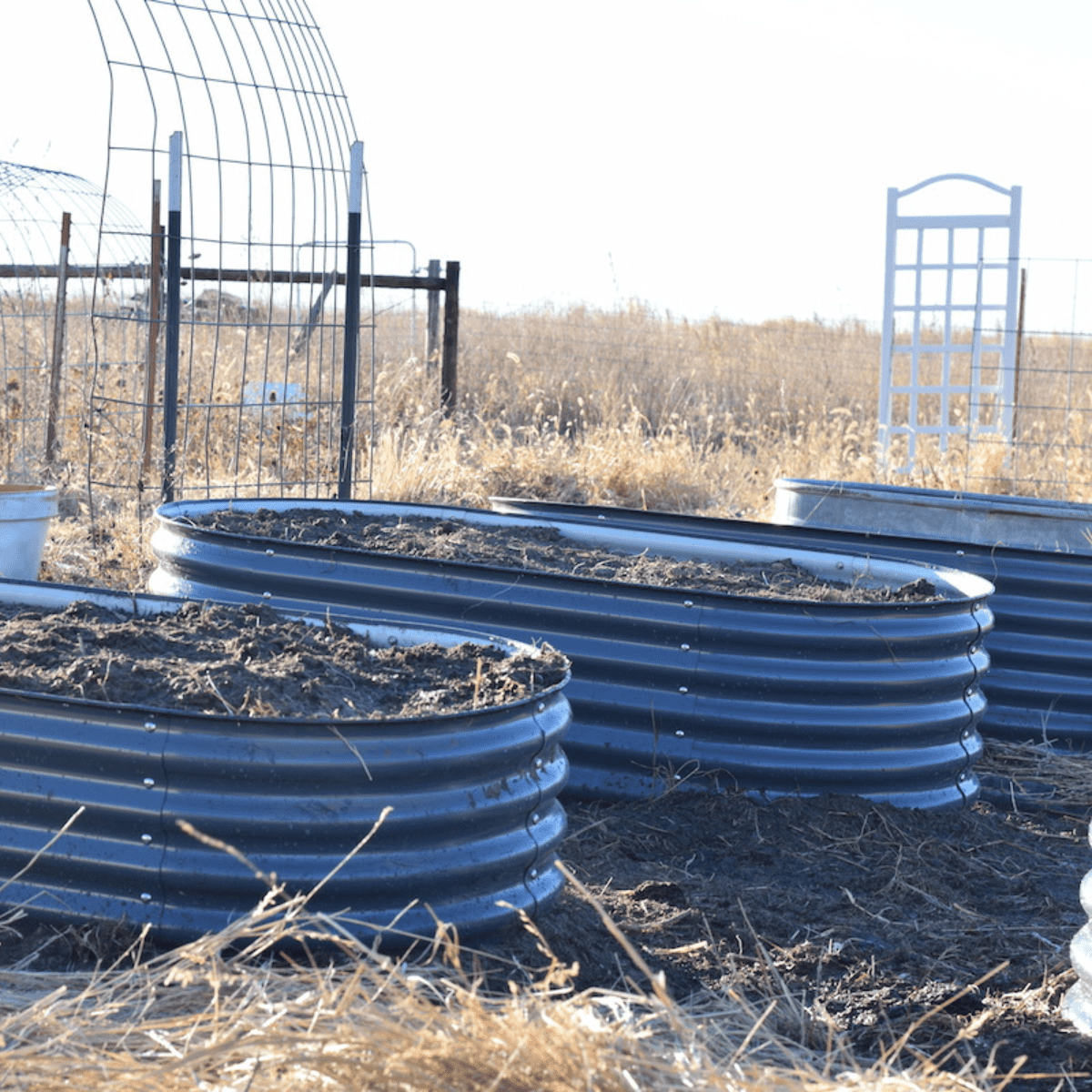
How to Fill a Raised Bed
When gardening in raised beds it can be confusing to know what to fill them with. And if using soil from the garden center, it can become quite expensive.
We love to use raised beds in the garden. In fact, it is my preferred method! Learn more about the benefits of raised bed gardening here.

And in the raised garden beds, we use the Hugelkultur method for filling the beds. This method is super simple and provides numerous benefits to the health of the soil.
Hugelkultur method of gardening is the process of layering organic garden waste inside the raised garden bed. Sometimes this is also referred to as lasagna gardening.
Filling garden beds
Deciding how to fill your beds depends on a few variables. What is the height of your garden beds? What type of plants will you grow in them?
Some varieties of plants have a deeper root development and require more soil than others. So, keep this in mind when filling the raised beds.
For example, root crops like carrots, potatoes, sweet potatoes, and parsnips will need more soil to than something with shallow roots.
Other plants with larger root systems like tomatoes, asparagus, winter squashes, and watermelons are some examples.
Many lettuce varieties and other greens don’t need as much soil. Same goes for most common culinary herbs like basil, oregano, and sage.
This layering method will save on extra expenses and it provides beneficial amendments to the soil.
We have a variety of challenging soil conditions where we live. Some of the challenges that we face are areas of clay and compacted soil.
And in other areas, we have sandy soil.
So, using raised beds gives us an easy way to successfully grow vegetables in our area.
Want to save this?
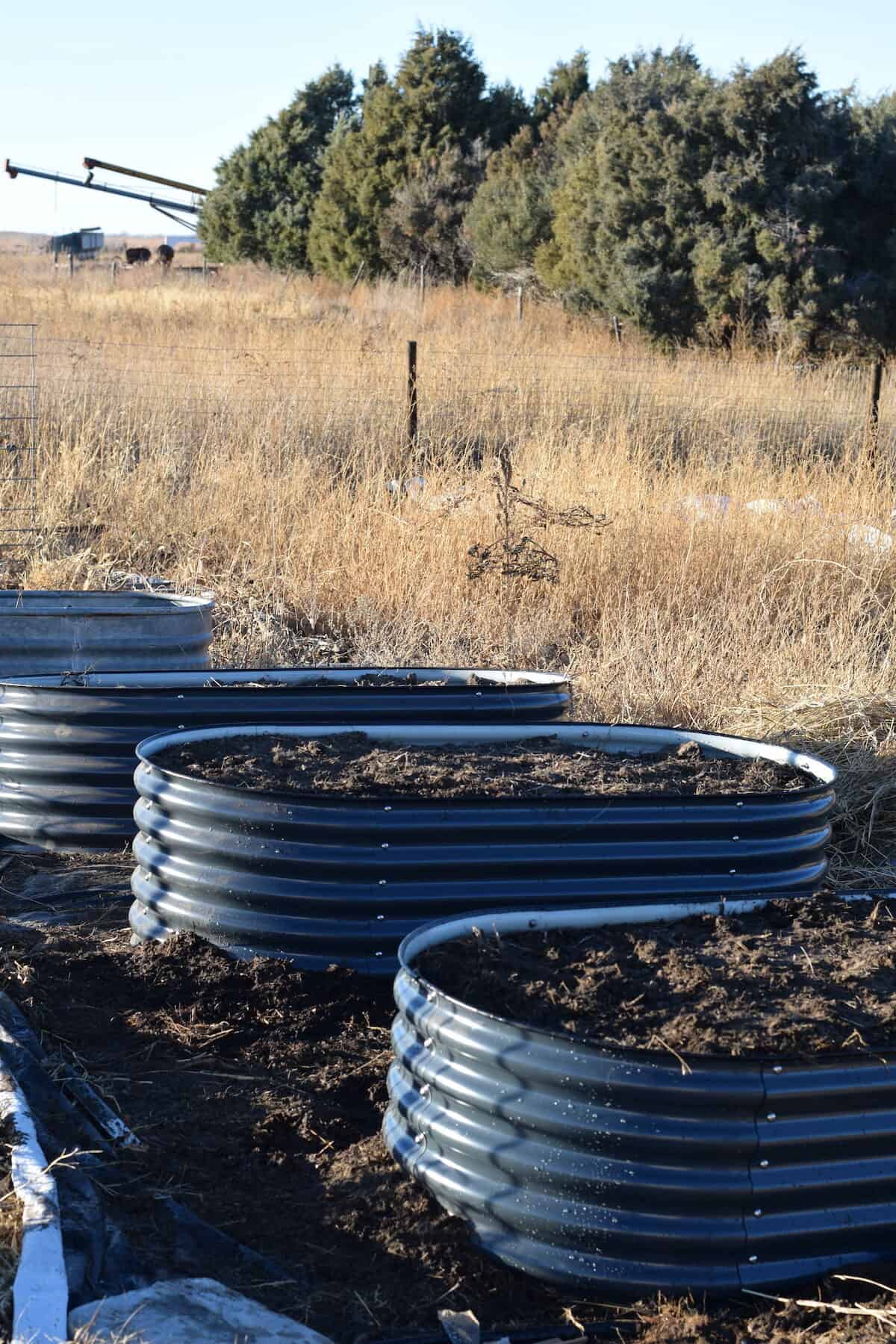
We are converting an old cattle pasture to a garden space at our new home. And we recently extended the garden space with galvanized metal raised beds from Olle Gardens.
So we filled these beds in preparation for the spring planting season.
Because of the difficulty with native grasses and weeds in this old pasture, we used a layer of heavy landscaping fabric.
Tip: if using something like this as a weed barrier, be sure to drill holes in the fabric for drainage.
Here’s how we filled the beds:
- layer of cardboard, logs, branches & sticks or twigs.
- old rotted hay (kitchen scraps, leaves, grass clippings also works)
- compost – homemade compost is such a great option for keeping costs down and providing beneficial nutrients and organic matter for the garden. If purchasing compost, be sure to choose one of good quality and test it before planting to ensure it’s not too hot.
- Animal manure – this is gold for the garden. I recommend goat manure, if available. Chicken and cow manure is also good. Whichever option you choose, be sure to allow about 4 months of aging/composting before using it in the garden.
- organic topsoil – be sure to choose a high-quality soil for a vegetable garden.
Nothing beats the value of building your own compost pile. If you’re new to this method, I suggest checking out Charles Dowding. He has a lot of great information on getting started with composting.
And he’s also well known for the No Dig garden method. Another favorite garden method of ours.
It is also important to note that you’ll want to provide for good drainage in your raised beds. A good galvanized raised bed, like these from Olle Gardens, are made with open bottoms.
This will help aid in proper drainage and proper root development for larger plants.



Mulching the beds
After planting in the raised beds, we like to use this garden straw to mulch around the plants. This helps keep moisture in the beds which helps with less watering. And it also keeps weeds under control.
Another option for mulching the beds is following the Ruth Stout method. Mulch the plants and beds with natural debris like leaves, twigs, pruning, kitchen scraps, and straw.

🖤 Featured products as mentioned in this post
Olle Gardens Galvanized Raised Beds – use code BHH10 for 10% OFF of your first order!
Charles Dowding – No Dig: Nurture Your Soil to Grow Better Veg with Less Effort
FAQ (frequently asked questions)
A common option is to use a good-quality soil blend of compost and soil. However, a budget friendly way of filling raised beds is to use the Hugelkultur method or layering of organic materials.
They should be filled to the top, not overflowing. As they are watered and the organic materials break down a bit, the soil begins to settle. Once the soil settles, provide good quality compost and topsoil as needed.
You can avoid the raised beds from becoming dried out by providing a layer of good quality (weed free) garden straw or other organic material like grass clippings, wood chips, dried leaves, or twigs to the top of the beds.







